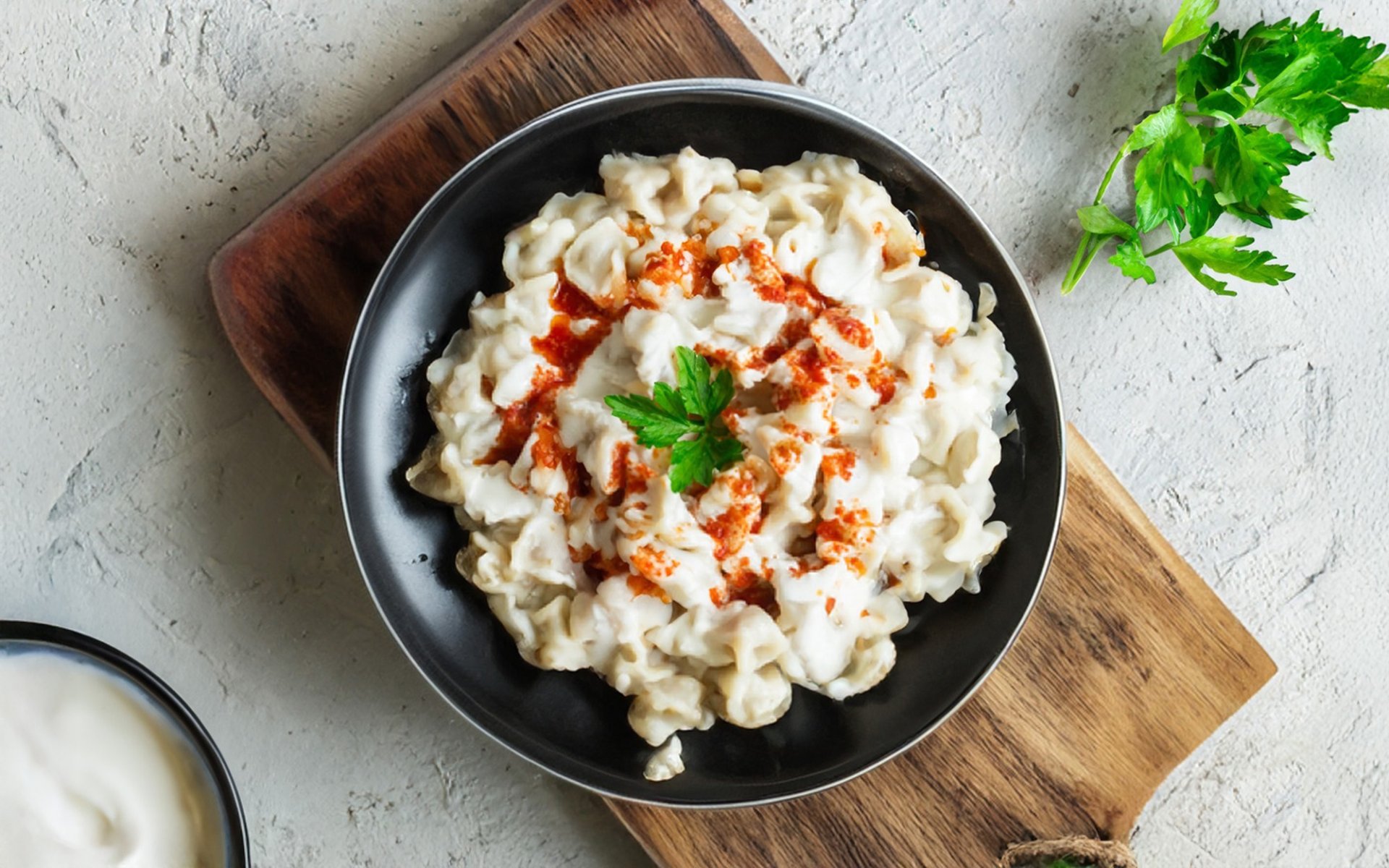Manti

When it comes to Turkish cuisine, many might immediately think of kebabs or grilled meats. However, there's another culinary gem not to be missed: Manti, a traditional Turkish dumpling that has delighted palates for centuries. The unique characteristic of this dish lies in its tiny, flavorful dumplings, similar to gyoza, served with a yogurt sauce infused with aromatic garlic and various spices.
The Origin of Manti : From Central Asia to Anatolia
The origins of Manti trace back to Central Asia, a region historically inhabited by nomadic tribes. Legend has it that this dish was invented by the early Turkic ancestors, designed as a practical and portable food suitable for long journeys. Later, in the 13th century, as Turkic people began to migrate and settle in Anatolia (the southwestern part of Asia, present-day Turkey), the Manti recipe evolved, adapting to local tastes, cultures, and available ingredients.
As trade routes and civilizations expanded, Manti gained widespread popularity throughout the Ottoman Empire, becoming a staple dish cherished by both sultans and commoners alike. It was frequently enjoyed during special festivals and significant social gatherings such as weddings, holidays, and religious festivals, reflecting Manti's role as a dish of celebration and communal bonding.
The First Recipe and Meticulous Manti Preparation
The earliest recorded Manti recipe appeared in a 15th-century Ottoman cookbook written by Muhammed bin Mahmud Shirvani. This recipe specifically featured minced lamb and chickpeas as filling, seasoned with cinnamon and vinegar. It was served with a perfect combination of garlic yogurt sauce and a sprinkling of Sumac, a tangy, slightly tart spice.
The art of making Manti is a labor of love that requires meticulous attention to detail. The dough is carefully rolled into thin sheets, then cut into small squares. These squares are then filled with a mixture of minced meat (often lamb or beef), onions, and various spices. The key is to expertly fold these small squares into tiny dumplings; it is believed that the smaller the dumplings, the greater the skill and delicacy of the maker. Once folded, the dumplings are boiled until cooked, then generously topped with garlic yogurt sauce and hot melted butter infused with paprika or other preferred spices.
Regional Variations of Manti: A Delightful Diversity
Throughout its history, Manti has enjoyed immense popularity in Turkey, spreading to various regions. Each region has incorporated its own unique characteristics and local tastes into its Manti recipes, for instance:
- Kayseri: Manti in Kayseri is distinct for its small, characteristic triangular shape.
- Kastamonu: Here, Manti is often served with a chickpea sauce, adding another layer of flavor and texture.
- Gaziantep: Manti from this region often boasts a spicy kick derived from Aleppo Pepper, a local spice.
Global Popularity and Health-Conscious Adaptations
In recent years, Manti has gained tremendous popularity worldwide. It's not just enjoyed in neighboring countries like Uzbekistan, Afghanistan, or Armenia, and across Central Asia, but has also crossed continents to major cities such as New York, London, and Sydney. Each country has adapted the form and ingredients to suit its own culinary culture.
While the classic version primarily focuses on lamb, today, a wide array of fillings and sauces have emerged. Health-conscious options for vegetarians are also available, with fillings ranging from pumpkin, lentils, and spinach. This showcases Manti's versatility and adaptability while still preserving the charm of the traditional Turkish dumpling. If you're interested in trying your hand at making Manti or exploring high-quality ingredients for other Turkish and Central Asian dishes, Rimping Supermarket has everything you need.


